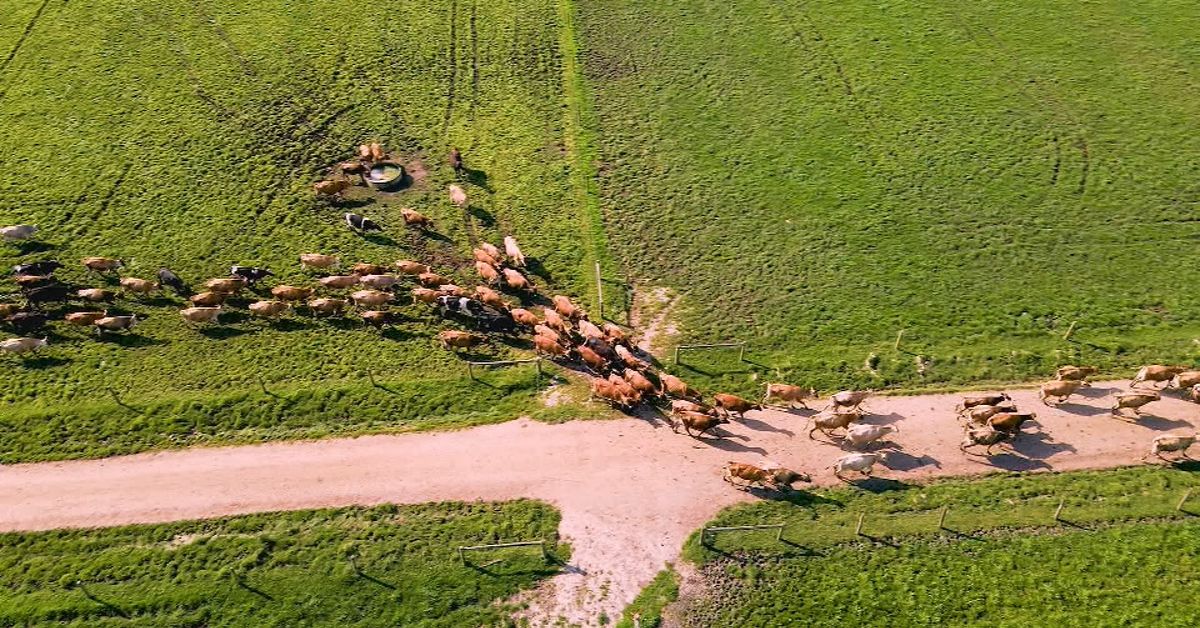### Summary
Food prices are increasing globally due to drought conditions, disrupted grain deliveries, and government policies to protect their own supplies. The rising prices are driven by concerns over the enduring effects of a warming climate on production and the possibility of high food prices becoming embedded in the economy. Supermarket profits have increased, but this does not help mitigate the rising costs for consumers.
### Facts
- Wheat prices spiked and then retraced due to Russian missile strikes on Ukrainian ports and disrupted grain exports.
- Erratic weather is depleting rice harvests in India, leading to a ban on rice exports and increasing the risk of higher global prices.
- Food prices in Australia have remained steep, with dairy and breads/cereals leading the price increases.
- Food prices have risen steeply in the UK and France, while prices in the US have increased at a slower pace.
- High global food prices pose a risk of creating an inflationary spiral and are beyond the influence of central banks.
- Australian supermarkets have increased profit margins during the inflationary period, but deny profiteering.
- While the extent of price rises may not be as bad as last year, there will still be an impact on near-term inflation and consumer purchasing power.
🌾 Wheat prices spiked due to Russian missile strikes on Ukrainian ports and disrupted grain exports
🌦️ Erratic weather is depleting rice harvests in India, leading to a ban on rice exports and increasing the risk of higher global prices
🥛 Food prices in Australia remain steep, with dairy leading the price increases
🌍 Food prices have risen steeply in the UK and France, while prices in the US have increased at a slower pace
💰 High global food prices pose a risk of creating an inflationary spiral and are beyond the influence of central banks
🛒 Australian supermarkets have increased profit margins during the inflationary period but deny profiteering
💸 While the extent of price rises may not be as bad as last year, there will still be an impact on near-term inflation and consumer purchasing power.
### Summary
Consumer spending at pubs in Australia has remained steady despite rising inflation, with spending increasing by 2% in July compared to the previous month, according to data from CommBank. However, the average volume of transactions has fluctuated. Prices for pub meals, including popular items like chicken parma and steak, have steadily increased due to rising costs of ingredients, energy, wages, and salaries. The cost of dining out and takeaway meals has also increased by nearly 8% compared to the same period last year. Additionally, the federal government's alcohol excise has contributed to higher drink prices.
### Facts
- Consumer spending at Australian pubs rose by 2% in July and has increased by 2% annually, according to data from CommBank.
- The average spend at pubs per month is $31.20, which has remained steady throughout the year.
- The average volume of pub transactions has fluctuated, reaching a peak of 4,058 in April and dropping to 3,614 in July.
- Prices for popular pub meals like chicken parma and steak have increased steadily.
- The average price of a parma special increased by 37% to just under $20 in July 2023, compared to $14.40 in 2019.
- Retail chicken prices have risen by 11% since 2019, with a significant increase in the first half of 2022, largely due to higher grain, labor, and energy prices.
- Inghams, a leading chicken supplier in Australia, has increased prices by 13% over the year to July due to rising production costs.
- Steak prices have risen from $16.60 in 2019 to $23.70 this year, despite cattle prices at saleyards returning to 2018 levels.
- The cost of dining out and takeaway meals has increased by nearly 8% compared to the same period last year.
- The federal government's alcohol excise has resulted in higher drink prices, with the excise on spirits being $100 per liter and publicans paying $80 more for a keg of standard strength beer.
- The Endeavour Group, which owns a network of pubs and hotels in Australia, has reported strong sales growth in the 12 months to July, with record sales of $2 billion.
- The company has been able to pass higher labor and energy costs onto consumers without significant resistance.
Australia's inflation rate dropped to its lowest level in 17 months, driven by lower prices for fresh produce and automotive fuel, reducing the likelihood of the Reserve Bank raising interest rates; however, inflation in electricity prices remained high.
The global food commodity prices experienced a 2.1 percent decline in August, primarily driven by falling prices of essential food items, excluding rice and sugar, according to the latest report from the Food and Agriculture Organization of the UN (FAO).
The Australian government predicts that global commodity prices will decrease, leading to lower earnings from commodity exports despite expected increases in volume.
